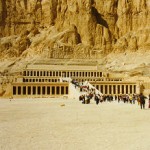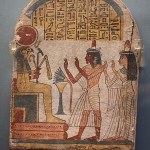
A Context for Nehmes-Bastet (KV64): A Birds Eye View of the Early Third Intermediate Period – Part 1
In January 2012, thanks to the discovery of a new tomb in the Valley of the Kings, named KV64, the 22nd Dynasty was catapulted into the spotlight. At the moment, apart from a couple of tantalising photographs and a video released by the University of Basel (Switzerland) all we know is that the mummified woman was called Nehmes-Bastet; she was a chantress; and her father was a priest at the Temple of Karnak [more…]
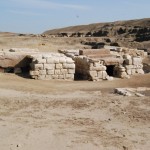
A Context for Nehmes-Bastet (KV64): A Birds Eye View of the Early Third Intermediate Period – Part 2
In Part 1 the political background to and development of the Third Intermediate Period was described, emphasizing the way in which power became divided, both within the Delta and between the Delta and the south, where the Theban high priests became increasingly powerful. Part 2 looks at the blending of Libyan and Egyptian traditions, with new ideas expressed in funerary practices and in the role of religious institutions. [more…]
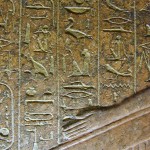
Lecture Review: The re-excavation of the tomb of Horemheb in the Valley of the Kings by Professor Geoffrey Martin
Professor Martin is currently engaged in assembling the results of his work re-excavating the tomb of Horemheb for publication, and it became clear from his lecture that this work is long overdue and will be welcomed by the academic community. Martin described re-excavation as a new type of archaeology, geared specifically to finding information that previous excavators may have missed. He cited Kemp’s work at Amarna as an example of this. [more…]

Consulting the Oracle
The word oracle derives from the Latin verb orare, to speak. Oracles were common to a number of cultures and are particularly associated with Classical Greece, where oracles were usually living individuals, male or female. In Egypt the oracle was a statue, usually hidden in the centre of the god’s temple, but taken out into the streets on procession during festivals for the public to consult. In either form the purpose of an oracle was to channel the messages of god, giving answers to specific questions. [more…]
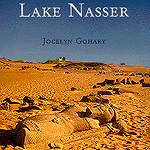
Book Review: Guide to the Nubian Monuments on Lake Nasser
This travel guide covers the monuments salvaged during the building of the Aswan High Dam, which were relocated to new higher land to escape the rising waters of Lake Nasser. The most substantial and impressive of these is Abu Simbel, but other sites, like Wadi al-Sebua, the sites at New Kalabsha and the tomb of Pennut are also important and very beautiful. [more…]
Edition - January, 2012
Tomb K64 in the Valley of the Kings – The Story as it Broke
This brief article was written on 15th January when the discovery of Tomb KV64 in the Valley of the Kings was formally announced. Please refer to the Addendum of 18th January for the latest news, which also corrects some of the orginal report. The tomb was announced in Luxor by Mansour Boraik in Luxor and […] [more…]
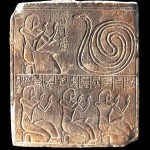
Paneb – “The All Round Bad Guy”
In Joyce Tyldesley’s Judgment of the Pharaohs, Tyldesley makes several references to an individual at Deir el-Medineh named Paneb, whom she describes evocatively as “the all round bad guy” (2000, p.127). In this short article, I have brought together some of the misdemeanours outlined in a letter known as Papyrus Salt 124 (BM 10055) for a closer look at this colourful character. [more…]
AWT Conference 2011 Review: Glass Faience and Pottery Making at Amarna (Paul Nicholson)
O45.1: An Ancient Industrial Estate Review by Kate Phizackerley. Published on Egyptological, Magazine Reviews, Edition 3, 7th December 2011 Introduction As described in the overview of the 2011 AWT Conference which I co-authored with Andrea Byrnes (see bottom of this review), Dr Paul Nicholson spoke about his excavation of the Amarna site designated O45.1, which […] [more…]
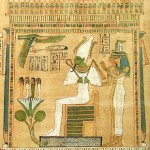
 By
By 